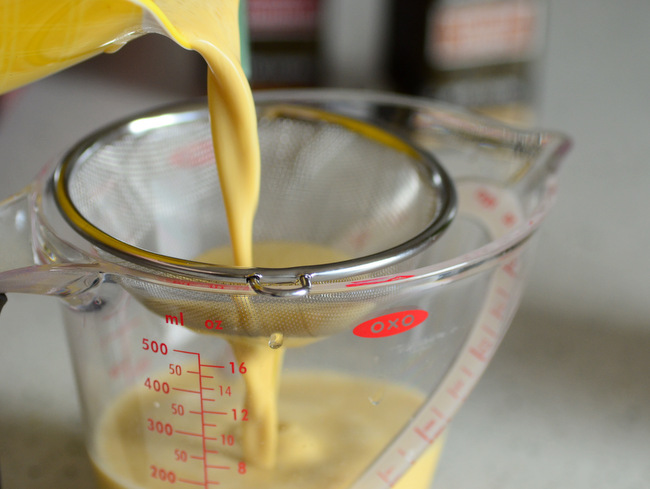
Custard is a cooked mixture of eggs and milk that can be made sweet or savory and used in a wide variety of culinary preparations. Custards can be cooked on the stovetop to make pudding or a vanilla ice cream base. They can also be baked in the oven to create creme brulee or a variety of different pies. Sweet custards tend to have sugar, vanilla and other flavorings added to them, while savory custards usually include herbs, spices and vegetables/meat. Ideally, custard should be silky smooth even when it includes extra ingredients, such as veggies in the case of a quiche or fruit in the case of a clafoutis.
The best way to ensure that your custard is smooth is to strain it. Straining helps to remove any bits of curdled or cooked egg from the custard, making it a key step in custard-making.
How to Strain Custard
Most of the time, a recipe will direct you to strain your custard at the appropriate time. If it doesn’t, you should strain it anyway. A stovetop-cooked custard should be strained after it has thickened by pouring it through a strainer. The strainer should be fine, but your average kitchen strainer/sieve will get the job done. The heat from cooking custard on the stovetop can cause bits of egg to cook and become small lumps in the mixture. Do not press down during or after straining, as you want to remove any lumps or curdled bits from the mixture and ensure that your finished custard is silky.
Uncooked custards – or, more accurately, custards that go on to bake in the oven – should also be strained, but they should be strained prior to cooking. Straining an uncooked custard removes any bits of egg that may not have been fully emulsified in the mixing process, minimizing the chance for lumps in the baked custard. As with the cooked custards, you don’t want to press down on the mixture during straining so that you don’t accidentally press any extra egg bits back into your custard.






What do you think?